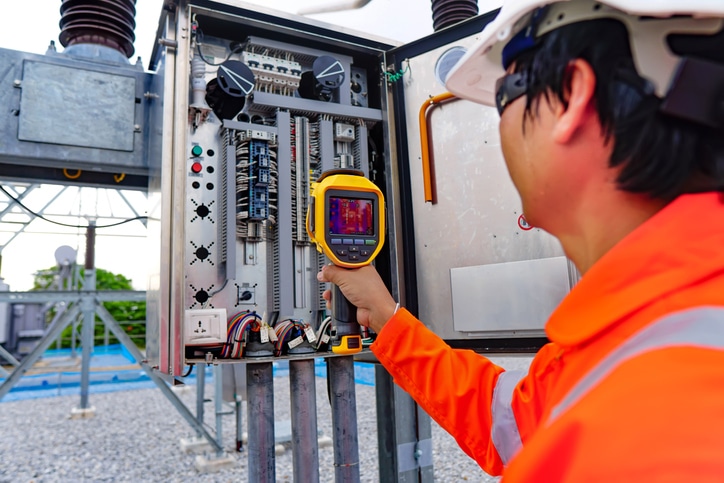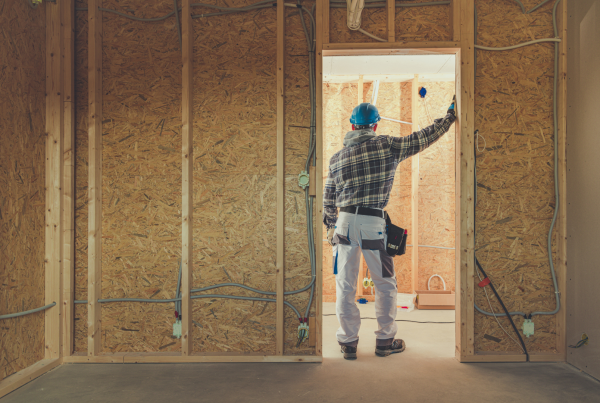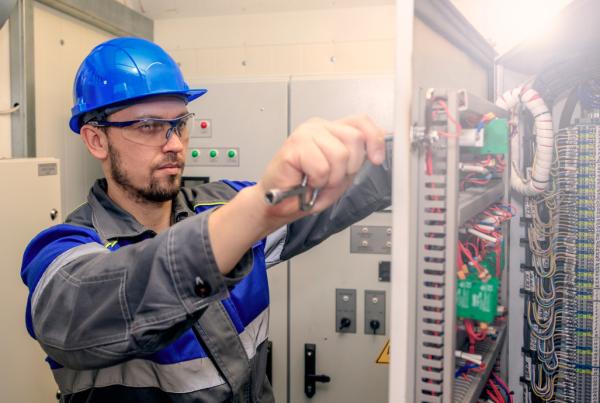Employees and employers have recently been able to breathe a sigh of relief as the world economy reopens. However, it has also re-introduced many issues that troubled employers before, such as ensuring a safe work environment for employees and a seamless power supply. Thermal imaging (or infrared imaging) of electrical systems is proving to be a very effective solution for these issues.
Thermal imaging for electrical systems has been widely used to inspect components prone to overheating under certain circumstances and ensure that the entire system is operating flawlessly. Any abnormal heating is associated with the increased current flow or increased resistance, both of which are prime indicators for electrical problems.
Let’s look closely at the concept and see how electrical contractors can help you create a safe work environment via infrared imaging.
The Potential of Thermal Imaging for Electrical Systems
Many electrical problems manifest as overheating wires or components first before breaking down or leading to an electrical fire. This invisible sign can only be seen via infrared thermography, helping you identify any signs of potentially damaging circumstances about to arise.
There is a small amount of heat created in every component whenever an electrical current passes through it. However, according to Ohm’s Law of Joule Heating (P=I2R), electrical resistance (R) and the heat energy generated (P) are directly proportional to each other. More heat gets generated with higher resistance. This concept is widely used in electrical stoves, toasters, and other heating equipment.
However, when it comes to wires, breakers, and other circuit material, the resistance needs to be kept minimum to ensure minimum energy loss and keep any possible damage to a minimum. A circuit can overheat for several reasons:
- Undersized conductors
- Loose connections
- Touching or close nodes in the circuit
- Poor quality wires
- Wrong conducting material used
- Excessive current flow/surges, and many more.
The heat dissipated can melt away parts of the circuit, introducing an electrical shock risk as well.
By using thermal imagery, electricians can better evaluate the heat signature being released in a given circuit and identify points of abnormal resistance long before it becomes a major problem. Two key thermal patterns are considered a sign of pending electrical failure(s):
- Very high resistance because of poor contact. This problem usually arises between a switchboard and plus (connectors). A small point of contact, even a few millimeters, can heat the circuit by over 90° F. If not taken care of immediately, it can lead to potentially devastating circumstances.
- Overloaded circuit (or multi-phase imbalance). High resistance can lead to a single point overheating. If the whole circuit is heating up, it might be because it is overloaded or facing a multi-phase imbalance.
An IR snapshot can turn any overheating points red and help identify the points of concern. You need to make an informed decision immediately to prevent future issues. Skyline Electric engineers can help you understand the issues you face and what you can do to mitigate them.
If you would like to see how we can help you or other benefits that thermal imaging offers, get in contact with us today. Let us help you adopt a proactive electrical safety approach!




